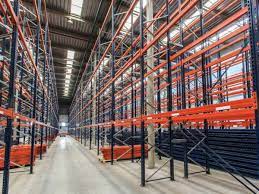Pallet inverters are equipment specially meant for rotating the pallets that are fully loaded. Often, they are also used for removing and replacing damaged pallets beneath the palletized load. Besides that, there are many other applications for solving tilting and transferring issues in the warehouse.
Top Industries is one of the developers and suppliers of a pallet inverter needed by warehouses, where this company can also customize it according to their applications of the warehouse.
Pallet inverters can also be used to rotate products so they will fit more compactly in a storage area or to stop the pallet’s contents from caking or settling over time.
When moving products between shipment and production zones, these pallet inverters rotate up to 180⁰ to make it simple to switch between wooden and plastic pallets.
Despite their name, pallet inverters may also be used to invert products such as slip sheets, support boards, and even products without a pallet that are not placed on pallets.
Some pallet inverters have larger ranges than others and may be adjusted to support a variety of loads. In order to handle delicate products with attention and heavy-duty items with the force required to keep the object in place while rotating, most pallet rotators come with pressure clamps that can be adjusted.
To fulfil necessary tasks ergonomically, pallet inverters can be employed as a standalone unit or integrated into a production line.
Inspection of storage equipment
Storage equipment needs to be regularly inspected, and repairs need to be done quickly and efficiently. Any component of the system, including the upright bracing beam, is susceptible to damage.
- The maximum gap between the upright and straight edge for an upright bend towards the rack beam width shall not be greater than 5 mm.
- A straight edge one meter long will be placed in connection with a certain flat surface on the damaged member’s concave side such that the damaged area should lie central, as close as possible, to the straight edge’s length.
- Check whether there is a bent or gap between the racks. The maximum gap allowed between the upright and the straight edge should be a maximum of 5 mm.
- On the frame bracing’s a plane, for an upright bent the maximum gap allowable between the upright and straight edge maximum of 3 mm.
- Beams must not deflect more than the L/200, while L is the distance between 2 beam supports.
- Left-to-right and also front-to-back deformation for an upright that has deteriorated such that there is a concurrent bend in both longitudinal and lateral directions must be measured and addressed individually, with the necessary 5,0 mm and 3,0 mm restrictions being observed.
- The distance between the straight edge and also the bracing member in case of bracing members bending in either plane shall not be greater than 10.0 mm across a 1.0 m gauge length. It is impractical to have the pro rata of lower bracings with 1.0 m gauge length.
You can also follow on Twitter to update yourself on the latest developments of Top Industries.




